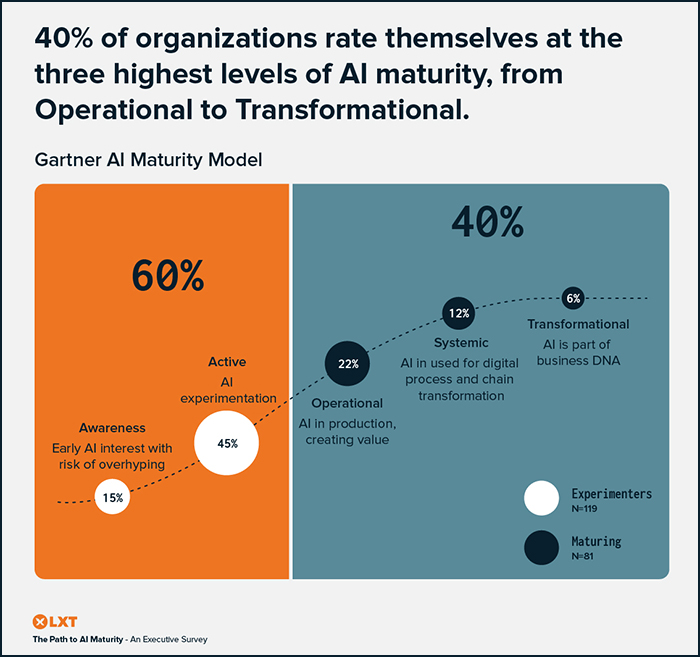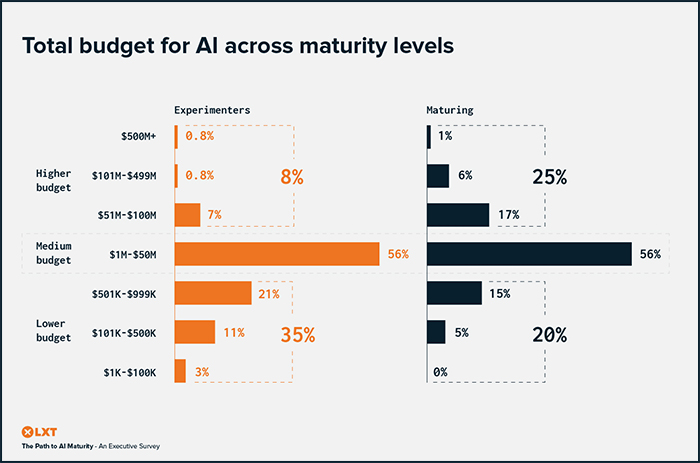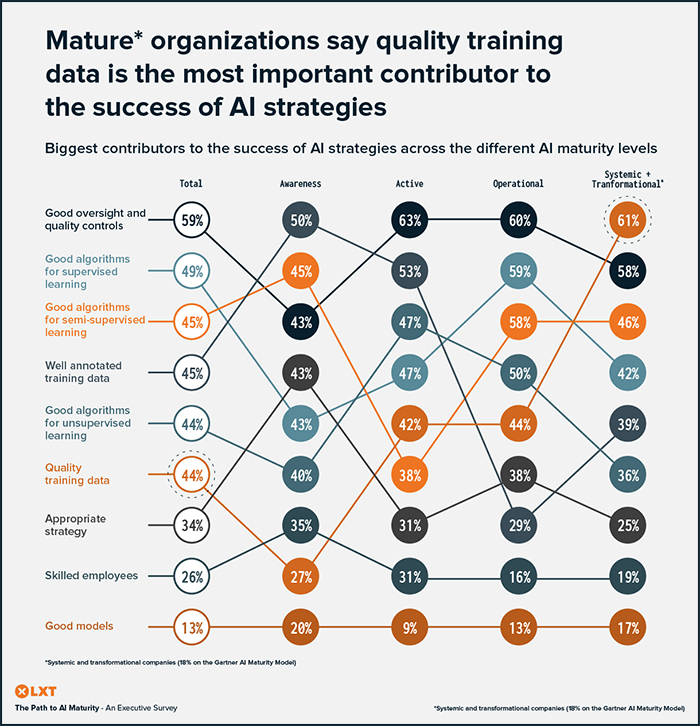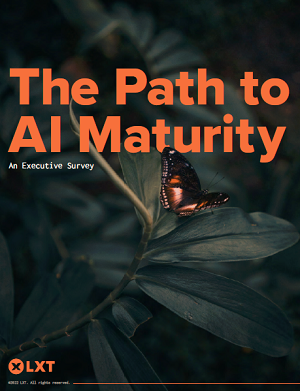Sponsored Post
Earlier this year, we published the findings of our recent executive survey in a report entitled The Path to AI Maturity. Through this research we wanted to understand how companies currently view their level of AI maturity, as well as the characteristics of companies that have reached higher levels of maturity and how these attributes change as a company matures in its AI journey.
In this survey, we focused on US organizations with annual revenues of over $100M and company sizes greater than 500 employees. We also screened potential respondents for their relevant level of AI experience. Our findings represent the views of 200 senior decision makers, two thirds of whom are from the C-Suite.
Here are some of the key takeaways:
AI investment is strong across all company types surveyed
The survey found that over a third of high revenue companies are spending between $51-100 million on AI and seven in ten organizations are spending at least $1 million or more of their budget on AI. Enterprises are using AI to innovate, scale up and drive competitive advantage as well as gain internal efficiencies.
More than 40% of organizations have reached maturity
As part of the survey, respondents placed their companies on the Gartner AI Maturity Model based on their view of their organization’s AI maturity phase. According to the results, more than 40% of organizations have reached high levels of maturity, from Operational (AI in production, creating value) to Transformational (AI is part of business DNA) status. Given the high percentage of AI projects that fail to move to the production phase, it is encouraging to see that 40% of companies have started to see ROI from their AI initiatives and are even moving beyond this phase where AI is becoming part of the DNA of their business.

To get to maturity, a quarter of maturing organizations are spending $51 million or more on AI, compared to just 8% of experimenters who represent the 60% of companies that are in the earlier stages of maturity. This underscores the level of investment needed to get to AI maturity.

AI training data is a key to success, and budgets will increase
Mature organizations say that quality training data is the most important contributor to the success of their AI strategies. When asked about the benefits experienced as a result of high-quality training data for AI, companies that are earlier in their AI journey see efficiency and agility gains, while more mature organizations report accelerated time to market and improved competitive advantage.

Four in 10 organizations surveyed allocate a high proportion (70%+) of AI budget to training data. On average, over half of the total AI budget for the companies surveyed is dedicated to training data. Organizations that are investing in AI recognize the importance of high-quality training data and how prioritizing this investment allows them to get to market faster with far less rework. As a result, two-thirds of all organizations expect their need for training data to increase over the next five years.
Learn more in the full report
In our report with the full findings, you can learn more about how organizations are achieving AI maturity, including insights by vertical.
Download the full findings in our report, The Path to AI Maturity.
Author Bio

Phil Hall, Chief Growth Officer, LXT. Phil is a committed team-player with a passion for language and linguistics. Over the last 25 years, he has been fortunate enough to work with, and learn from, a team of subject matter experts with world class skills and experience in linguistics, business, management, and leadership. In his current role with LXT, an emerging leader in global AI training data, he is working with a hand-picked team of experts to achieve ambitious growth goals.





Speak Your Mind